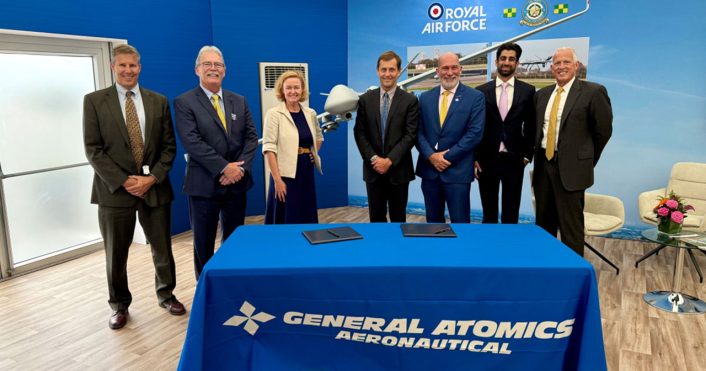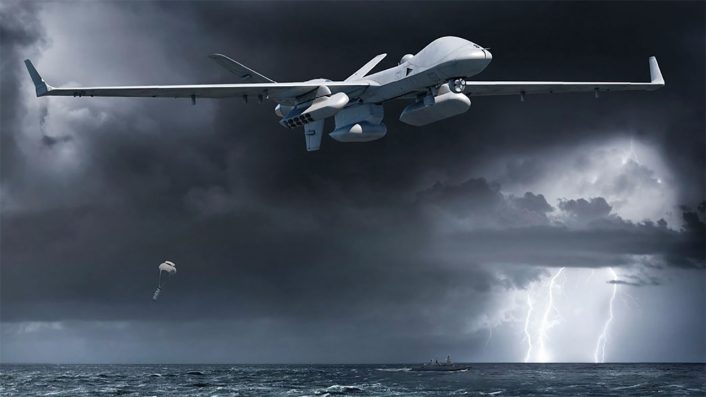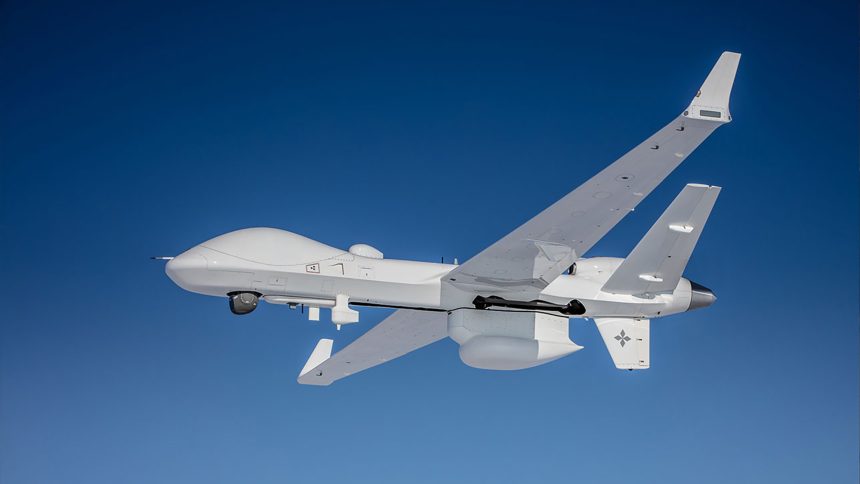With support from the NATO Support and Procurement Agency, Denmark has ordered four MQ-9B SkyGuardian aircraft from GA-ASI along with three Certified Ground Control Stations (CGCS).
Denmark joins a growing collection of nations opting for the newest variant of the MQ-9, which importantly offers extra features and redundancies that allow operation outside of segregated airspace alongside general air traffic.
MQ-9B was granted a Military Type Certificate (MTC) by the UK Military Aviation Authority in May 2025, becoming the first large uncrewed aircraft to do so. For European nations, with dense airspace and large amounts of civilian air traffic, the ability to operate in standard airspace without restriction is vital for routine flight.
The aircraft have been procured with assistance from the NATO Support and Procurement Agency (NSPA), who are able to act as liaisons between NATO nations and aircraft manufacturers to ease the procurement process and provide a contractual framework for certain types of military equipment that are seen as strategic enablers for the alliance as a whole.

GA-ASI President David R. Alexander noted that 2025 has been a productive year for the company and for MQ-9B. “First, we earned MTC and now we’ve added Denmark to the U.K., Belgium, and Poland as MQ-9B customers in Europe. I believe the extensive waters of the North Sea, Norwegian Sea, and Baltic Sea of the Nordic countries make the MQ-9B a very effective tool for national maritime surveillance and security.”
The latter point is an important consideration for Denmark, whose maritime area of interest spans not only around its own borders but also around those of the Faroe Islands and of Greenland. This effectively spans the Greenland-Iceland-UK (GIUK) Gap that features strongly in terms of NATO strategic planning for the defence of the Atlantic Ocean.
Statements made by U.S. President Donald Trump suggesting Greenland could be seized and incorporated into the United States have made Denmark’s defence of the overseas territory a particular priority. We have previously reported on a recent deployment of Danish F-16s to the territory.
Many Danes say they are heartbroken by how the U.S. has turned from best friend to foe over Greenland https://t.co/qieBA17b3t
— The Wall Street Journal (@WSJ) July 23, 2025
MQ-9B is certified for operations in extreme cold weather environments, featuring anti-icing and de-icing systems, and compatibility with the European Galileo satellite navigation system ensures accurate positioning in polar regions with comparatively limited Global Positioning System coverage.
Built-in optical, infrared, and radar-based sensors offer an effective maritime surveillance capability as delivered. Additional systems can be integrated in underslung pods, with GA-ASI developing sonobuoy dispensing systems for anti-submarine warfare (ASW), intelligence gathering pods with geolocation technologies, and electronic warfare (EW) pods for area denial tasks.

Communications can also be bolstered using podded systems, with the LAC-12 providing a laser communications capability, and Rosetta Echo Advanced Payload (REAP) offering the aircraft the ability to act as a communications node for civilian and military emergency response forces.
MQ-9B SeaGuardian® sets the standard for advanced, persistent unmanned ISR&T operations, delivering unmatched reliability and versatility for maritime defense and security. Built on a proven legacy of #RPAS innovation, MQ-9B provides multi-mission flexibility with assured… pic.twitter.com/ysBi4oGYFj
— General Atomics Aeronautical Systems, Inc (GA-ASI) (@GenAtomics_ASI) July 23, 2025
Combined with the aircraft’s endurance, offering over 24 hours of flight time, and reduced per-flight hour operating costs, MQ-9B will help to provide more persistent and responsive maritime patrol coverage across Denmark’s marine territories. With no dedicated maritime patrol aircraft, Denmark’s current maritime and land surveillance capability is fulfilled by a small fleet of multirole Challenger 604 business jets. Three aircraft are equipped for this task, while the fourth serves in a VIP and liaison capacity. Replacement efforts for the Challenger began in 2024.
The four MQ-9Bs are expected to be delivered between 2028 and 2029. Three Certified Ground Control Stations (CGCS), specially developed to permit operation in regular airspace, will allow a high tempo of aircraft employment.









